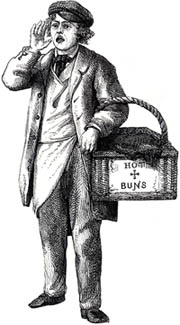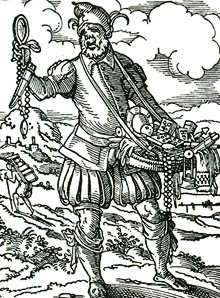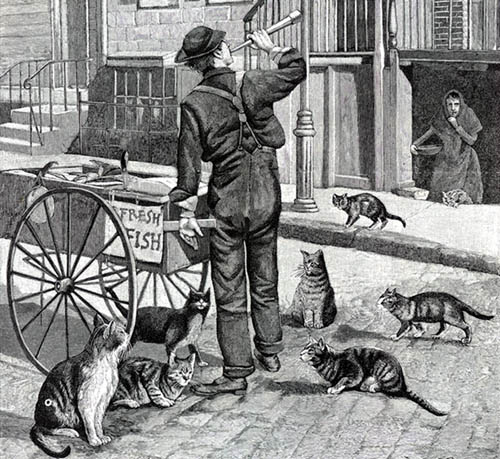The Just Price
by Andrew Boyd
Today, guest scientist Andrew Boyd asks "what's it worth?". The University of Houston presents this series about the machines that make our civilization run, and the people whose ingenuity created them.
As a child I once asked my father, "How much is something worth?" A practical man, he answered without hesitation: "Something is worth exactly what someone else is willing to pay for it."
 Price and worth are different, but they're closely related. "What's it worth to you?" is a question about how much we're willing to pay, not an appeal for a value judgment. When we ask, "What price love?" it isn't normally in the context of a negotiation. The confusion stems from our conviction that price should reflect worth. When this isn't the case, we feel a sense of injustice.
Price and worth are different, but they're closely related. "What's it worth to you?" is a question about how much we're willing to pay, not an appeal for a value judgment. When we ask, "What price love?" it isn't normally in the context of a negotiation. The confusion stems from our conviction that price should reflect worth. When this isn't the case, we feel a sense of injustice.
Aristotle is often credited as the first person to take an in-depth look at the relationship between price and worth, devoting an entire book of the Ethics to the justum pretium -- the just price. A remarkable work in its time, the Ethics was reintroduced to the Roman Catholic Church sixteen centuries later by Saint Albert the Great and his student Saint Thomas Aquinas. Albert and Thomas in turn refined Aristotle's argument. Their conclusion? Of moral necessity, price must reflect worth.
 Yet how could the just price be determined? The average man or woman couldn't be trusted. In the eyes of the early Church, the very act of trading was unavoidably wrought with sin. Mercantile activity was seen as a swamp of immorality, complete with greed, lying, and cheating. Merchants weren't just tempted to stray from the will of God at every turn; a degree of moral corruptness was a necessary part of the job. Saint Augustine maintained that "just as art cannot exist without [misrepresentation], neither can business exist without fraud." Today, in a world shaped by the invisible hand of Adam Smith, we might simply refer to these scandalous acts as "haggling".
Yet how could the just price be determined? The average man or woman couldn't be trusted. In the eyes of the early Church, the very act of trading was unavoidably wrought with sin. Mercantile activity was seen as a swamp of immorality, complete with greed, lying, and cheating. Merchants weren't just tempted to stray from the will of God at every turn; a degree of moral corruptness was a necessary part of the job. Saint Augustine maintained that "just as art cannot exist without [misrepresentation], neither can business exist without fraud." Today, in a world shaped by the invisible hand of Adam Smith, we might simply refer to these scandalous acts as "haggling".
How, then, could the just price be determined? Should it come from a committee of learned churchmen? Using what formula? Maybe a range of prices should be chosen instead of a single price. But then where should the boundaries be drawn? It's a very difficult question. Ask yourself: should a gallon of gas cost two dollars or three? Why not one? Do we reward only the labor of pumping and refining? What about the many fixed costs associated with refineries, pipelines, and oil tankers? Safety and risk need to be accounted for, as does the clean up after unfortunate but inevitable accidents. Is it fair for a price to be so high that it doesn't allow us to get where we need to go? So low that it encourages consumption of a precious resource?
after unfortunate but inevitable accidents. Is it fair for a price to be so high that it doesn't allow us to get where we need to go? So low that it encourages consumption of a precious resource?
Faced with such complicated questions how do we relate price to worth? Many solutions have been proposed. What's surprising is that one in particular stands out. A solution so practical, so obvious, that it really comes as no surprise at all.
In Albert the Great's words, that solution was, "a price is just [if it reflects] the estimation of the market place at that time." Simon of Bisignano referred to the "true value of goods as the price for which they were commonly sold." And Bernard Botone of Parma said simply that "a thing is worth as much as it can be sold for." Apparently the great scholars who preceded my father were able to add little to his offhand insight.
I'm Andy Boyd at the University of Houston, where we're interested in the way inventive minds work.
Dr. Andrew Boyd is Chief Scientist and Senior Vice President at PROS, a provider of provider of pricing and revenue optimization solutions. Dr. Boyd received his A.B. with Honors at Oberlin College with majors in Mathematics and Economics in 1981, and his Ph.D. in Operations Research from MIT in 1987. Prior to joining PROS, he enjoyed a successful ten-year career as a university professor.
The material in this essay is taken from John. W. Baldwin, "The Medieval Theories of the Just Price: Romanists, Canonists, and Theologians in the Twelfth and Thirteenth Centuries," Transactions of the American Philosophical Society, 49 (4), 1959.
All images are clipart.
